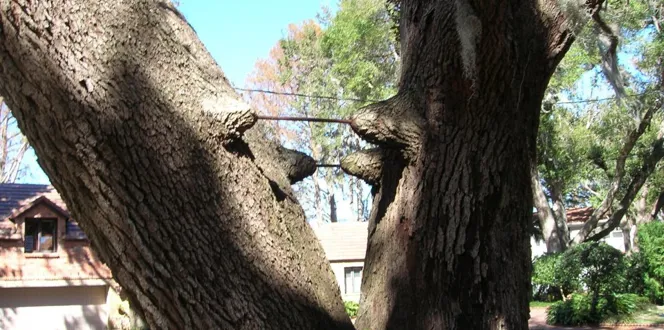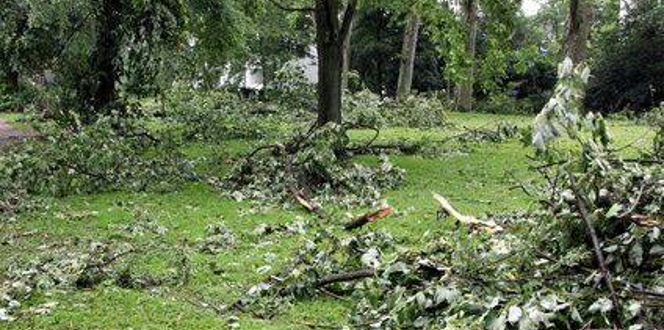Remember the old saying that lightning never strikes the same spot twice? If this were true, it would surely be a relief for our trees in the midst of summer storms.
But contrary to what we have been told, lightning can strike in the same place and more often than we thought, and trees are a top target.
Below learn how to tell if a tree was hit by lightning and what you can do to protect trees from lightning damage in the future.
What happens when lightning strikes a tree?

Lightning targets the layer of water and sap just underneath the tree’s bark. This sweet spot conducts electricity and is the perfect travel route for a bolt of lightning.
As lightning runs down the inside of the tree, chunks of bark explode off of the trunk leaving an exposed streak. Additionally, leaves above damaged bark are cut off from their water supply, leaving them wilted and no longer able to produce food for the tree.
Can a tree survive a lightning strike?
A tree’s ability to recover after a lightning strike depends on the species, health, and moisture levels as well as the lightning’s power.
After the storm passes, first see if the tree poses a hazard to passersby or your home.
If the tree looks dangerous or needs large broken or dead limbs removed, contact your local arborist. They can also share their expert opinion and perform an in-depth tree risk assessment.
In some cases, lightning wounds will heal themselves over time. More severe gashes in the trunk leave the tree vulnerable to harsh weather or insect and pathogen entrance, which can lead to tree decay cavities and decline. If the lightning girdles the tree, then it will die quickly. If the tree survives, plant health care techniques can be applied to help the tree recover faster. Cracks can also sometimes be secured with bolts.
How can I protect my tree from lightning?

Installing a lightning protection system is a proactive way to keep your tree and property safe.
Mounted on your tree’s branches and trunk and running into the soil through a ground rod, a heavy copper cable system gives lightning an alternate path to the ground to protect your tree. Your arborist can design and install a system to match your tree and its surroundings. Trees of high value and trees adjacent to buildings are good candidates for lightning protection systems.

If you already have a lightning protection system in one or more of your trees, have an arborist inspect it annually and make repairs and updates as needed. Sometimes components detach or break, or systems may need to be expanded to keep up with a growing tree.





